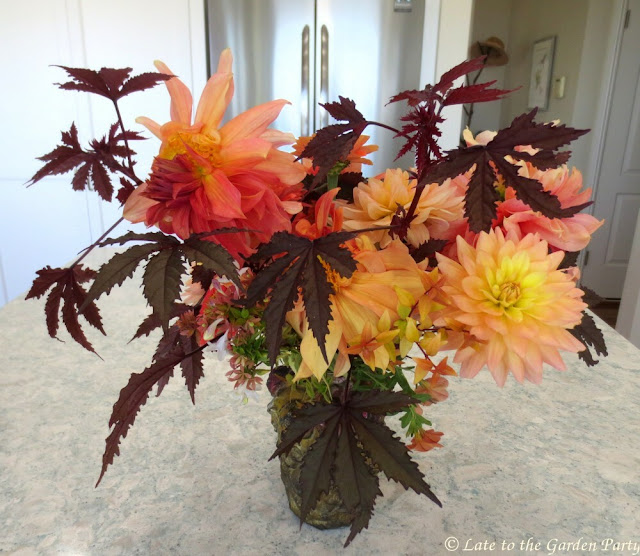My approach to items on my "to do" list is usually haphazard and this week was no exception. I finished cleaning up the leaf debris on the front slope on the southwest end of my garden, deadheading and cutting back plants in the process. As one thing inevitably leads to another, I ended up doing some pruning and planting in the process too.
 |
| I pulled the remains of a sunflower from this pot and transplanted 3 Pelargonium schizopetalum I removed from another container in early summer. The tuberous plants produce unusual flowers (which you can find in a 2022 post here). |
 |
| In Wednesday's post, I remarked that I'd "liberated" several pups of an Aloe striata x maculata. I went ahead with the plan I'd mentioned, removing the large Aeonium arboreum that occupied the spot next to the mother plant and planting 4 of the pups there. I also removed a matching clump of Aeonium on the opposite side of the path (atop the retaining wall) to give a Pennisetum 'Fireworks' an opportunity to spread out. |
 |
| In addition to the mother Aloe striata x maculata and its pups, this upper tier of the front slope contains 2 'Moonglow' Aloes, as well as several smaller succulents |
The south end of the front slope looks neater, which will do for now, but I expect I may end up beheading and replanting a lot of the Aeonium arboreum on either end of this section of the garden before the year's out.
 |
| Wide shot of the roughly terraced front slope showing the replanted upper tier |
 |
| Wide shot of the area to the left of the pineapple guava tree, showing some of the large Agave desmettiana 'Variegata' planted there in 2018 as pups |
Work on the street-side succulent bed also continued. Taking out the stump of the Auranticarpa rhombifolia that died seemed to be a bigger job that the prior removals of these tree-like shrubs in 2016 and 2020; however, maybe our memories are faulty.
 |
| Photo of my husband's work midway through the process |
In addition to that stump, I asked my husband to remove three large agave rosettes that were trailing into the street. An electric saw make that a lot easier than digging out the stump.
What didn't get done was removing the Aeoniums sticking out under the Xylosma congestum hedge. It was on my (augmented) "to do" list but gardeners working across the street chose to deposit the debris that wouldn't fit into our neighbor's own green recycle bin into ours so there was no space to cram in the succulents.
We've a chance of rain this weekend, although I'm not going to count on it until I see it. However, as the first Santa Ana wind event of the season is expected on Monday, bringing a heightened risk of wildfires with it, a little preemptive rain would be helpful. I'll close with some of the latest bright spots, courtesy of my cutting garden.
 |
| Three more dahlias are blooming at last! Left to right are: Dahlias 'Breakout', 'Calin', and 'Lady Darlene'. |
 |
| Aeoniums aren't the only thing I have in overabundance right now. I met 3 friends for lunch yesterday and arrived bearing dahlias. |
Best wished for a wonderful weekend!
All material © 2012-2023 by Kris Peterson for Late to the Garden Party














































